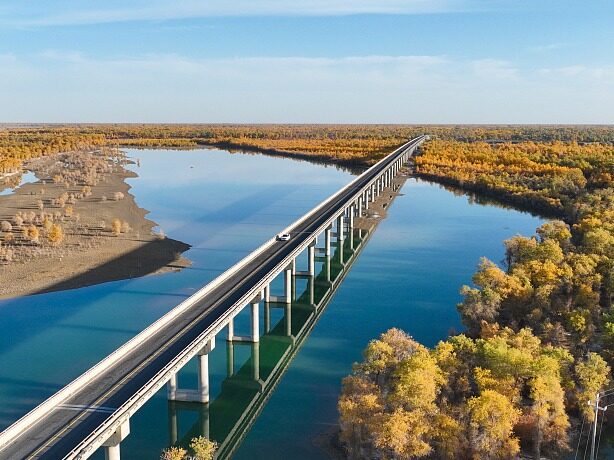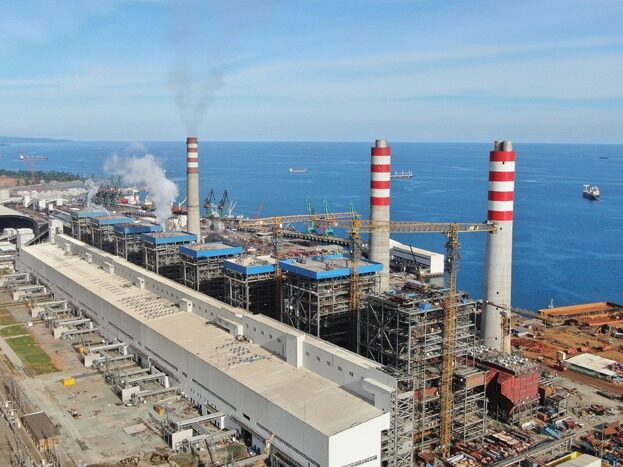- Central Asia effectively connects and communicates Silk Road trade
- What the Silk Road precipitated was not only a culture, but also the experience of social and economic development at that time and the crystallization of wisdom from Eastern and Western civilizations

Central Asia played an important role in the history of East-West trade exchanges along the Silk Road. The self-produced and transited goods in Central Asia enriched the East-West trade market. The ancient peoples of Central Asia also played a role as a bridge for trade and cultural exchanges. Formed the earliest international trade circulation area. The opening and development of the Silk Road provided conditions for the exchange of civilizations in the ancient world, promoted the development of commerce and trade, communicated Sino-foreign relations, promoted cultural exchanges, expanded people's horizons, enriched the history and culture of various countries, and played a role in Sino-foreign economic and cultural exchanges. important role.
Connect East-West trade
Central Asia is deeply inland, far away from maritime civilizations, and its harsh natural and geographical environment has isolated it from civilizations such as China, India, and Iran. However, the ancient trade routes in Central Asia provided channels for contact with surrounding civilizations. In addition, because Central Asia is located in the necessary place of the ancient Silk Road and influenced by the commercial environment of the Silk Road, it has a strong sense of business and started cross-regional commercial and economic activities earlier. Commercial and trade activities in Central Asia also prospered the cities along the route. In the Middle Ages, the commercial, handicraft and cultural achievements of the Amu Darya and Syr Darya areas in Central Asia were very developed. These areas gathered a large number of Muslim scholars, artists and skilled craftsmen. craftsmen. Due to its location in the commercial network linking the Far East and the Middle East, the Transocentric region of Central Asia has a prominent place in medieval history.

Commercial trade in Central Asia had many different routes, the most important of which were the roads connecting China with the Western world. However, as far as commercial trade is concerned, the political environment in any period will affect the safety of caravans and the prosperity of trade routes. Therefore, caravans engaged in trade generally consider choosing relatively safe and favorable routes.
A transit point for Eastern and Western goods and technologies
Central Asia is rich in products, and the handicraft industry and commerce are prosperous and developed. Locally produced and exported commodities and goods have spread to various trade markets in the East and West through mature commercial routes, which has also established its influence and status on the Silk Road trade. Central Asian caravans brought spices, precious stones, pearls, gold threads, etc. from India, silk, porcelain, tea, etc. from China, and sugar, cloth, etc. from Persia. Markan and other important commercial towns collect, distribute, transship, and then export to major trade markets in Europe and Asia.
The strong complementarity between Eastern and Western commodities and the huge profits of Silk Road trade made the commodity structure of trade show a high degree of stability. Through the Silk Road trade in Central Asia, local products produced in West Asia and Central Asia were introduced to China, and items produced in China were also transmitted to the Western world through Central Asia. With the help of the trade market and exchanges in Central Asia, Chinese paper products and papermaking techniques were spread to the west. The Silk Road also brought Chinese movable type printing, iron smelting and irrigation technology, as well as lacquerware, porcelain, and gunpowder to Central Asia and the European world. , compass and other technologies. With the help of trade exchanges along the Silk Road, Chinese culture has also influenced Central Asia, West Asia and Western countries. At the same time, with the development and prosperity of the East-West trade along the Silk Road, the technology, culture and art of Europe, West Asia and Central Asia were also introduced into China. Therefore, the spiritual and cultural life of the countries along the Silk Road has been enriched, and the Eastern and Western civilizations have also prospered.
Ancient Peoples of Central Asia Promote Silk Road Trade Prosperity
Central Asia is the arena of origin, migration and fusion of ancient peoples. According to archaeologists, there are historical and cultural differences between some tribes living in Central Asia as early as the Neolithic Age and some tribes living in Siberia, the Urals, China's Xinjiang region, the coast of the Black Sea, Iran and the Indian Ocean at that time. contact.
The central part of Central Asia is a multi-ethnic mixed area. These ethnic groups have both similarities and differences in language affiliation, religious beliefs, codes of conduct, and ways of thinking. The steppe is key to understanding Central Asia's role in world history, and the basis for this was provided by the large-scale breeding of horses, the backbone of the steppe economy and the source of goods and the accumulation of national wealth. At this time, with the help of commercial activities, the farming and nomadic peoples of Central Asia had exchanges and contacts, and formed a fixed "economic and cultural model". Although the migration of the nomadic peoples in the Central Asian steppe disrupted the progress of civilization in the farming world, economically and culturally, the nomadic peoples were integrated into the farming world, which promoted the continuous expansion of the farming world. conditions are created.

The nomadic peoples who are active on the grasslands of Central Asia, because of the characteristics of their nomadic economy, have stepped out of a grassland passage through the Eurasian continent. They have close ties with the Silk Road and have become envoys in the Western Regions and the trade between the East and the West. The early Bronze Road, Jade Road and Grassland Silk Road were opened up. After the opening of the Silk Road, it became a channel for East and West to communicate with each other and learn from each other. Ancient Greek and Roman culture, Islamic culture, ancient Indian culture, and ancient Eastern culture intersected, influenced and learned from each other. Due to their location on the Silk Road, where trade exchanges between the East and the West must pass, the ancient peoples of Central Asia exerted positive and important influences and acted as intermediaries and bridges.
Form an international trade circulation area
The economic and cultural exchange in Eurasia was caused by silk trade. Central Asia's special and important geographical advantages determine its position in the East-West trade market. The currency circulated and used in the ancient Central Asian market is the best historical witness. Today's academic circles generally believe that the ancient world had four major currency systems, and the region where these four major currency systems converged and merged was Central Asia. Affected by it, a central Asian currency system with distinctive features and diverse integrations has been formed. Currency is a symbol of state power and a symbol of credit. On the ancient Silk Road, the political stability of a country determined the prosperity of the trade market and the changes in the type and quantity of currency circulation. Ancient Greece, Persia, and Dashi all ruled Central Asia, directly affecting the local economic life and currency circulation. Therefore, there has never been a currency circulation tradition based on a unified inherent value in the currency market in Central Asia. Various currencies are in circulation and used, and they only play the role of exchange medium and payment method within a specific and limited range. The types of coins circulating in ancient Central Asia mainly include: ancient Greek style coins, Persian Sasanian silver coins and imitation coins, imitation Tang Kaiyuan Tongbao style coins, and various Central Asian native coins. China's Kaiyuan Tongbao coins and silk are popular hard currencies in the Central Asian trade market. The Silk Road is a road of trade and currency circulation. Eastern and Western currencies converged and merged in Central Asia, forming the earliest "international trade circulation area", which in turn played a positive role in promoting economic and cultural exchanges between the East and the West. .
Central Asia is an important node on the ancient Silk Road where East-West trade and civilization exchanges, collisions and fusions took place. Looking at the important position and influence of the Central Asian economy in the history of Silk Road trade from the perspective of world history, it can be seen that it reflects the interaction and dialogue between world history, overall history and regional history. Carrying out in-depth exploration on this can expand the research scope of national history in Central Asia and enrich the research content of world history and the history and culture of the Silk Road.
The world today is facing major changes unseen in a century. Central Asia, as the starting point and priority development area of the Silk Road Economic Belt, has important strategic significance. The success or failure of the construction of the Silk Road Economic Belt in this region is related to the development of the Shanghai Cooperation Organization , China's peripheral diplomacy and other major issues. Under this historical opportunity, it is necessary to give full play to the historical responsibility and sense of responsibility of the times in academic research. Actively carrying out research on the economic history of Central Asia has important historical reference significance and practical enlightenment value for promoting the construction of the Belt and Road Initiative, breaking down regional trade barriers, promoting the development of economic globalization, and building a community of shared future for mankind. Editor/He Yuting
Comment
 Praise
Praise
 Collect
Collect
 Comment
Comment
 Search
Search














Write something~